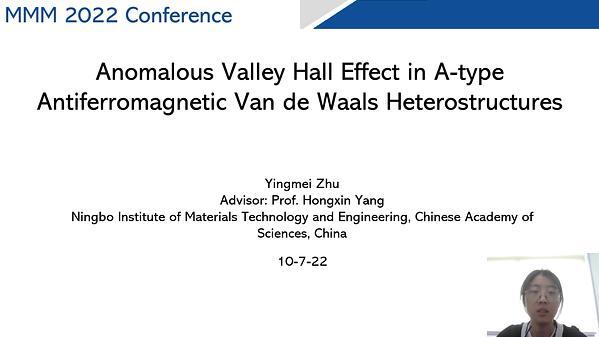Would you like to see your presentation here, made available to a global audience of researchers?
Add your own presentation or have us affordably record your next conference.
Recent advances in quantum magnonics 1-3, e.g., strong magnon-photon coupling 2 and single magnon sources 3, enable study of fundamental magnon properties. It is interesting to use these effects to answer fundamental questions of single magnon decoherence (SMD) mechanisms, understanding of which is necessary to use finite magnon number
states.
Here, we propose a simple measurement scheme for SMD. It is based on entangling a magnon and a qubit (with a much longer lifetime) with resonant frequencies ωm and ωq
, respectively,
and coupling rate κ. When the detuning Δω=ωm–ωq
is large (│Δω│»κ), the magnon and qubit states evolve independently. A magnetic field pulse can temporary couple (│Δω│«κ) the
system, thereby entangling or unentangling it.
The scheme (Fig. 1) is a temporal-domain Mach-Zehnder interferometer and works as follows. Initially, the qubit is excited, and the system is unentangled. A magnetic pulse entangles the
system and then it evolves freely for some time τ before another “unentangling” pulse is applied. When τ is comparable to the magnon lifetime, the final qubit population P(τ) depends on
the SMD mechanisms.
Using the Lindblad quantum master equation 4, we numerically simulated the proposed scheme (Fig. 2). We included two possible SMD mechanisms, namely, damping (Fig. 2a) and
dephasing (Fig. 2b) with decoherence rates Γ and Γ′, respectively. The fast oscillations in Fig. 2 are caused by usual quantum interference, while decay of the interference pattern is due to
SMD. Note, that the two mechanisms lead to different dependences of P(τ); in particular, dephasing alone does not change the average qubit population. We derived analytical expressions
that determine both rates Γ and Γ′ from the measurements of P(τ), even when both processes are present simultaneously (Fig. 2c).
In summary, we proposed a simple measurement scheme for SMD, which can be realized using currently available technology and which can be used to study fundamental questions of
quasi-particle decoherence at a single quantum level.
References
1 D. D. Awschalom et al., IEEE Trans. Quantum Eng. 2, 5500836 (2021).
2 P. G. Baity et al., Appl. Phys. Lett. 119, 033502 (2021).
3 A. V. Chumak et al., IEEE Trans. Magn. 58, 6, 0800172 (2022).
4 H.-P. Breuer and F. Petruccione, Oxford University Press (2002).

Fig. 1 Proposed SMD measurement scheme.

Fig. 2 Numerical simulation of SMD measurement scheme. (a): damping Γ≈38 μs-1. (b): dephasing Γ′≈50 μs-1 . (c): mixture of (a) and (b). Dashed lines: average P
